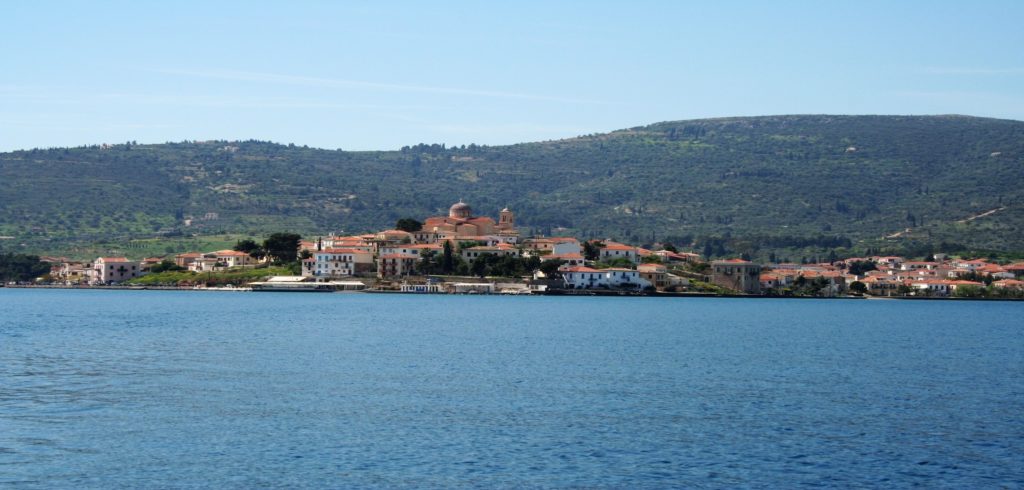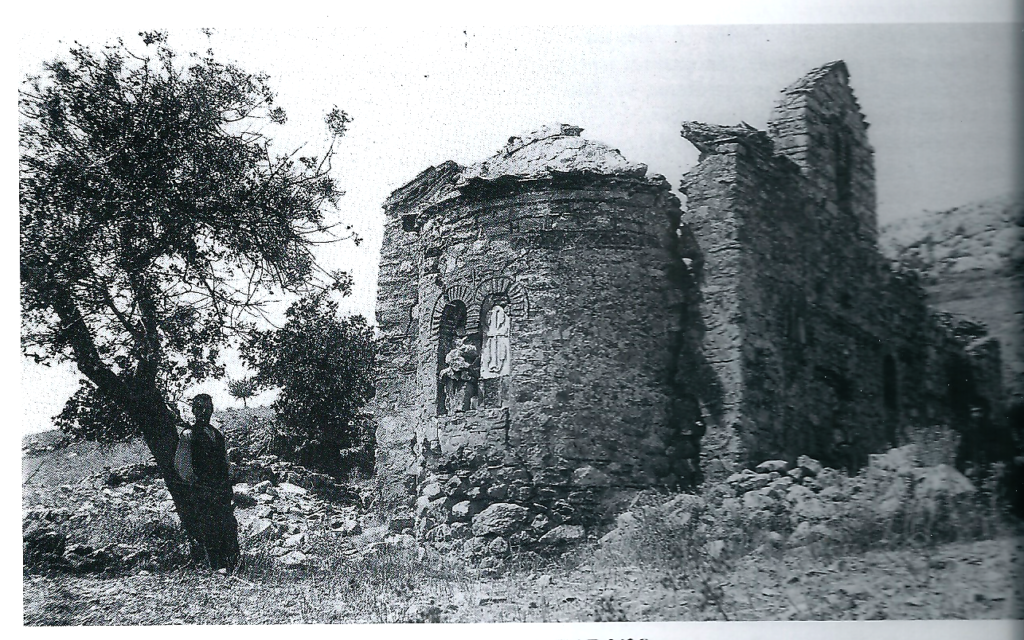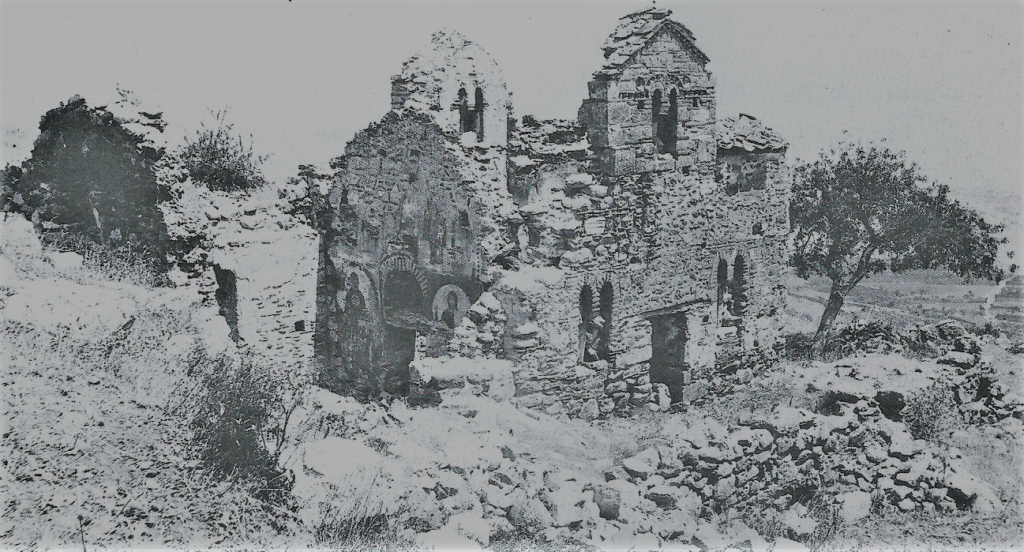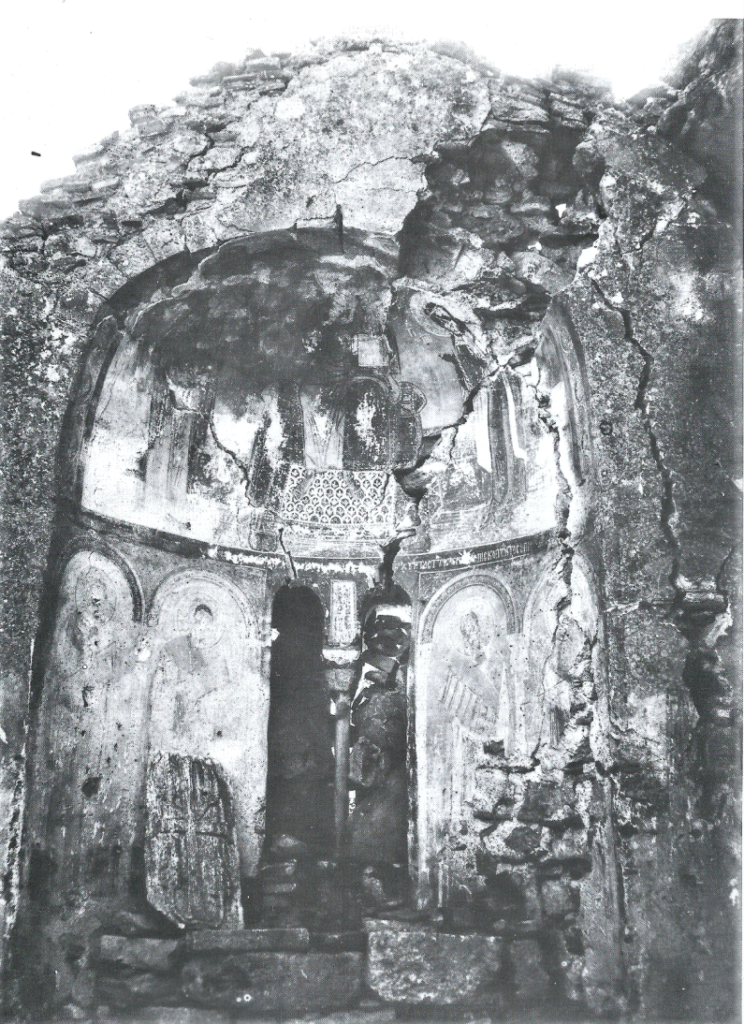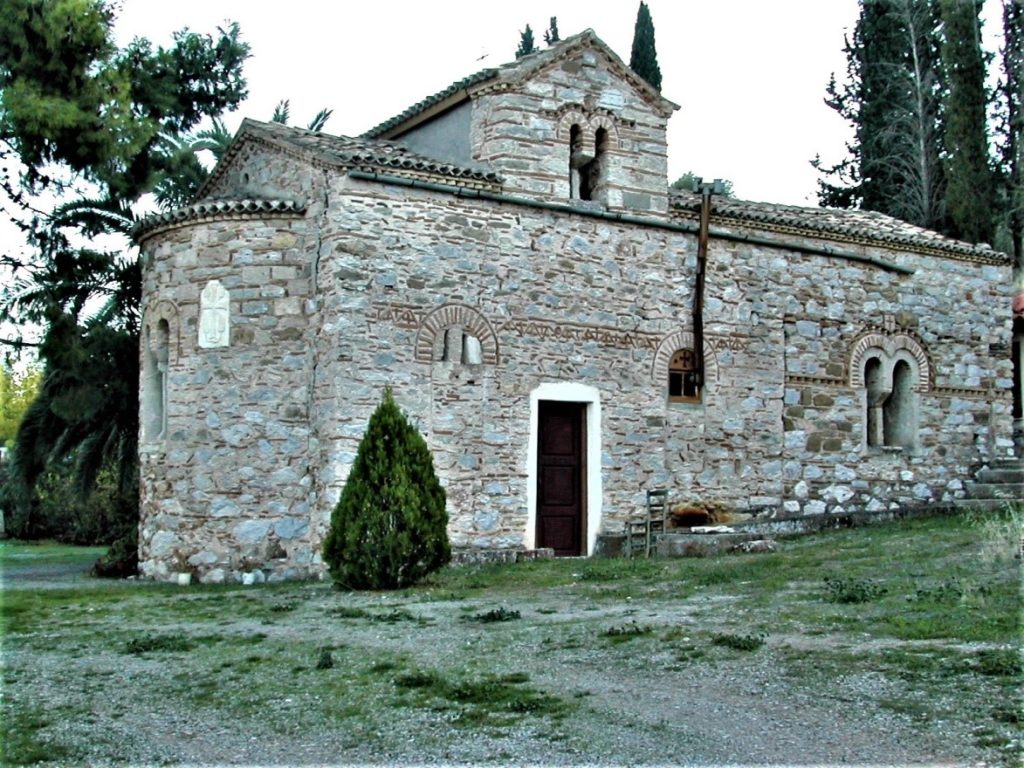West of Galaxidi, on the hilltop between Agios Athanasios and Kefalari, in a clump of trees, is the Byzantine Monastery of the Transfiguration of Christ the Saviour.
The view from there is unique. Green slopes lead to the beautifully built settlement on the small peninsulas between the two ports, from where the endless blue, stained only by the small islands, stretches to the opposite shore at the foot of the imposing mass of Parnassos.
In the clump of trees at the ridge's saddle is the monastery
View from the monastery
This wondrous image was gazed upon daily by Efthymius the Hieromonk and he felt proud of his homeland and, as he confesses, for its sake he toiled many nights reading old books that existed and were saved in the Monastery in order to write his CHRONICLE of Galaxidi .
The chapel of the monastery was built, as the CHRONICLE of Galaxidi, around 1250 by Desmotis of Epirus, Michael II Komnenos. It is rectangular with one aisle but with a cruciform roof. Around the chapel were the cells of the monks.
The monastery was destroyed several times by earthquakes and after the great earthquake of 1756, when the source of water that supplied it dried up the last monks must have left and the monastery and the chapel were left in ruins.
In 1898 the Byzantine archaeologist Georgios Lampakis visited the site and made a detailed description of the ruins and photographed it. (photos in the archive of G. Lampakis at the Byzantine Museum of Athens).
The ruined Temple of the monastery when the CHRONICLE of Galaxidi
The Temple in its current form
Lampakis describes the fresco paintings preserved inside the ruined walls as well as many of ancient Greek marble fragments and hypothesized that an ancient monument existed nearby. The ruins of the monastery had also been visited by various foreign travelers like Lerat. In 1905, the church was rebuilt with offers from the Galaxidiots and newer icons and a new wooden iconostasis were installed. From the mid-90s, a nun settled there who lived alone and took care of the monastery and the surrounding area and created a beautiful garden and the monastery once again became a popular place for country walks and pilgrimages. However during the last earthquake the church walls were damaged and the old lady left and the monastery since remains closed.
It was in 1864 when in the ruins of the Church of the Monastery, the young medical student K. N. Sathas from Galaxidi discovered the handwritten Chronicle and published it the following year. He seems to have been so affected by his discovery that he abandoned medicine and became one of the most important researchers and scholars of medieval and Byzantine manuscripts.
The Chronicle of Galaxidi Galaxy was written in 1703. It turned out to be a great text of Greek historiography covering events of eight centuries, from the 10rd to the 18rd century A.D. With poetic style, in the language of the time, the monk narrates with marvellous vividness raids, battles, disasters, glories and as well as the perpetual rebirth of the naval town.
A fascinating read as well as a valuable historical source. Find it here.
Bibliography
- G. Lampakis, Bulletin of the Christian Archaeological Society, 1903: 3rd Bulletin (1894-19020 Period A, p. 63). www.deltionchae.org
- Skiadas A. I. The Monastery of Sotiros Christos Galaxidi. Athens 1974.
- Vokotopoulos P. L., Observations on the temple of Sotiros near Galaxidi. Bulletin of the Christian Archaeological Society, Period IV Volume XIII. 1993-1994, pp. 199-210.
- Hatzidimitriou C.G. The Chronicle of Galaxidi: An Overview of its importance for understanding the history of Southwest Central Greece based on a new study of the ms. and an analysis of its sources. Byzantine study conference. University of Pennsylvania. Philadelphia 8‐10 October 2010


